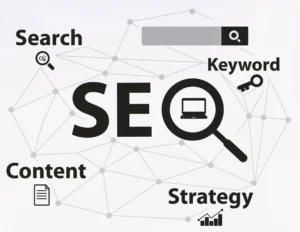02 Jan

Dental Marketing Strategies for Single and Multi-Practice Locations
Whether you run a single dental practice or multiple locations, these dental marketing tips will surely enhance your visibility in the market. Dental marketers understand the importance of effective marketing campaigns and the impact they can have on your practice’s success.
The Secret of Online Presence
Dental practices will still need a strong online presence in 2024. This involves having a well-designed, user-friendly website that showcases the practice’s capabilities and gives essential information to potential patients. It is critical to optimize the website for search engines (SEO) to maximize its presence in search results.

Publishing high-quality and authoritative content showcases your expertise and lends credibility to your website. Use formatting techniques like bold, italics, and heading tags to highlight keyword phrases, but avoid overdoing it. In addition, by integrating SEO and PPC operations, you can attract both organic and sponsored traffic. Finally, make sure your website is easy to use, gives value to your target audience, and capitalizes on existing traffic. By using these tactics, you may increase the exposure of your website and attract more visitors.
Strategies to Find Keywords!
• Conducting keyword research: Use keyword research tools like Google Keyword Planner, SEMrush, or Moz Keyword Explorer to discover relevant keywords. Look for keywords with high search volume, low competition, and high relevance to your website’s content.
• Analyzing competitor keywords: Analyze the keywords your competitors are targeting. Identify their top-ranking keywords and the strategies they are using. This can provide valuable insights and help you discover additional keyword opportunities.
• Long-tail keyword research: Long-tail keywords are longer and more specific phrases that have lower search volume but higher conversion potential. Include long-tail keywords related to your niche to capture highly targeted traffic.
Manage Your Reputation
Reputation management is critical to obtaining new patients. Online reviews and ratings have a significant impact on a patient’s decision-making process. To preserve a positive internet reputation, dental practices need to actively monitor and respond to reviews, both positive and negative. Dental practices can gain confidence and credibility by actively connecting with patients via internet platforms, drawing new patients to their practice.
Social Media Marketing
Social media platforms are powerful marketing tools for dental practices. In 2024, dental practices need to leverage the reach and engagement potential of platforms like Facebook, Instagram, X (formally known as Twitter), and TikTok to connect with current and potential patients. Creating engaging and informative content, such as oral health tips, success stories, and before-and-after transformations, can help build brand credibility and attract new patients. Paid advertising on social media can also be an effective way to reach a wider audience.
Many dentists are self-conscious, yet great social media is all about building a personal brand around oneself. While the office may have its own website, social media platforms are linked to individuals even while they are representing the company. When looking for a dentist, patients frequently go beyond the typical means of word-of-mouth referrals or browsing through directories. They use the internet to learn more about the dentists they are considering. Personal branding comes into play here. Dentists can provide valuable insights about their academic background, training, experience, specializations, certifications, awards, and community engagement by establishing a strong personal brand.
Develop Your Personal Brand
A comprehensive personal brand story helps dentists build trust and familiarity with potential patients. Patients want to feel empowered with adequate information before making a decision, and having access to detailed information about a dentist’s background and expertise can help them feel confident in their choice. Additionally, existing patients and those who have been referred to a dentist may also search for more information online to learn about the dentist’s qualifications and track record.
adequate information before making a decision, and having access to detailed information about a dentist’s background and expertise can help them feel confident in their choice. Additionally, existing patients and those who have been referred to a dentist may also search for more information online to learn about the dentist’s qualifications and track record.
In addition to creating content, dental practices can also use social media platforms to interact with patients directly. By responding to comments and messages in a timely and professional manner, practices can foster a sense of community and establish themselves as accessible and patient-focused. This personalized approach can help strengthen patient relationships and encourage loyalty.
HIPAA and Social Media Secrets for Communication
I think we should talk about how HIPAA and social media cross paths. HIPAA requires dental practices to protect patient privacy on social media. Patient consent comes first. A signed consent document specifying social media use must be in the patient record.
Dental clinics should only share educational content and general communication to improve patient experience and trust. Using encrypted messaging or secure patient portals for confidential communication needs to be part of the overall communication strategy. Following these approaches, dental clinics can communicate with patients on social media while maintaining HIPAA compliance.
If you want to learn more about HIPAA and social media, please visit the HIPPA Journal at: https://www.hipaajournal.com/hipaa-social-media/
Strategies for Using Strong Keywords!
• Prioritizing keywords: Organize your keyword list based on relevance, search volume, competition, and commercial intent. Prioritize keywords to align with your website’s goals and have a good balance between search volume and competition.
• Analyzing search intent: Consider the intent behind each keyword. Determine whether the searcher is looking for information, wants to make a purchase, or is seeking a specific service. Align your keyword strategy with the searcher’s intent.
Unlocking QR Codes For Better Patient Experience
One strategy to focus on is involving your patients by having them give your practice an online testimonial about their experience. You need to make it easy for patients to give them to you. One way is through the use of QR codes. This QR code must be visible at the end of the appointment, like on the counter or exit door. Plus, the dentist and their staff need to ask for the referral from the patient before they leave the office. Having the referral done with a QR code on the spot boosts your referral base threefold.
By featuring these positive experiences on your website and social media platforms, practices can build trust and credibility with potential patients. Sharing real-life stories of satisfied patients can help alleviate any concerns or fears and encourage others to choose the practice for their dental needs. Patients can quickly follow the dental practice on various social media sites by using QR codes, simplifying the process and saving time. QR codes, which can be strategically placed in the dentist’s office on brochures, posters, or business cards, enable patients to access the practice’s social media profiles with a quick scan.
Patients can quickly follow the dental practice on various social media sites by using QR codes, simplifying the process and saving time. QR codes, which can be strategically placed in the dentist’s office on brochures, posters, or business cards, enable patients to access the practice’s social media profiles with a quick scan.
The ease of access to critical information and services is one of the primary benefits of employing QR codes. Patients, for example, can make appointments fast by scanning the QR code and using the practice’s online appointment booking system. Practices can also provide patients with dental care advice, promotions or new service updates, and even links to educational movies or blog articles with these codes. Improving the patient experience is at the heart of using QR codes.
Referral Marketing
Dental practices can also benefit from implementing a patient referral program. By offering rewards and incentives for current patients to recommend their coworkers, friends, and family, dental practices can create a sturdy foundation for sustainable growth and success. Providing exceptional patient experiences and offering incentives for referrals as a practice can significantly boost word-of-mouth marketing.
Video Marketing
Video marketing is gaining traction in the dentistry business and will be a key strategy in 2024. To educate patients about various procedures, introduce the dental staff, and offer patient testimonials, dental clinics can develop educational and appealing movies. To boost patient engagement and create leads, videos can be published on social media platforms, websites, and email newsletters.
Strategies for On-page Keyword Optimization!
• Optimizing on-page elements: Incorporate keywords into key on-page elements like the page title, headings, meta descriptions, URL structure, and body content. Ensure keywords are used naturally and do not compromise the readability or user experience.
• Creating high-quality content: Develop informative and engaging content incorporating the targeted keywords. Focus on providing value to your audience while naturally integrating keywords throughout the content.
• Monitoring and refining: Regularly monitor your website’s performance using analytics tools. Track keyword rankings, organic traffic, and user engagement metrics. Refine your keyword strategy based on performance data and adapt to changes in search trends.
Local SEO
For single-practice locations, local search engine optimization (SEO) is crucial. Optimizing the website and online listings for local keywords and location-specific information can help drive targeted traffic to the practice’s website. This includes optimizing Google My Business listings, creating a location-specific landing page, and obtaining local backlinks. For multi-practice locations, implementing SEO strategies that target each specific location can help improve visibility and attract patients to each practice individually.
This can be achieved by creating separate location pages on the website, optimizing Google My Business listings for each location, and tailoring content to address the unique needs of each local market. By focusing on local SEO, dental practices can ensure that they are reaching the right audience in their specific geographic area. This targeted approach can increase the likelihood of attracting patients who are actively seeking dental services in their vicinity, ultimately leading to higher conversion rates and a stronger patient base.
Using Dental Marketing Specialists
While all of these things can be handled as the owner of the dental practice, the question becomes: is your job marketing or are you a dentist working with patients? Smart business owners know how to delegate jobs that they don’t know how to do or where they can earn more money doing something else. Crafting an effective dental marketing strategy involves careful planning and execution. Dental marketing experts understand the nuances of the industry and can help you devise a dental marketing plan that aligns with your practice’s branding and target audience.
By implementing this dental marketing strategy, you can effectively promote your practice, attract new patients, and increase your revenue. In 2024, dental practices must adapt to the evolving landscape of marketing strategies to generate income and attract new patients. By focusing on building a strong online presence, leveraging social media and video marketing, optimizing for local SEO, and implementing patient referral programs, both single and multi-practice locations can thrive in a competitive market. Embracing these income-generating dental marketing strategies will help practices stay ahead of the curve and achieve long-term success.
About Author

Marc Heffner is the founding partner of DSO Marketing X and is a fractional CMO in the dental vertical. Through developing strong marketing teams and introducing innovative technology platforms needed to achieve ambitious goals, Marc creates growth opportunities for private equity firms working in the healthcare space and self-funded growing practices willing to invest in their future. Marc has extensive experience in developing strategic business and marketing plans that include developing marketing organizations from scratch and then growing them into large in-house teams. He has also constructed and managed several call centers that book thousands of new patients a month. You can find more information about Marc’s fractional CMO team at DSOMarketingX.com. You can also email Marc at MHeffner@DSOMarketingX.com
Recent Posts
Join Thousands Of Happy Providers
Start maximizing your revenue today!
26%
Average increase in practice ‘s productivity
- Increase case acceptance
- 350+ payer integrations
- Collect more, faster
- Reduce A/R costs
- Full automation
- Live customer support
Ready to get started?
Your online account setup only takes minutes. If you have questions, contact us at (213) 645-2813

Support Hours:
6 AM to 5PM (PST)








